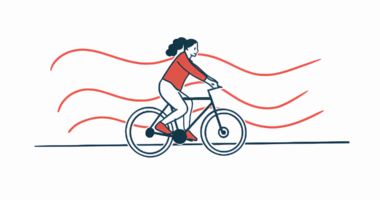Walking Tall app goes to bat for people with Parkinson’s disease
Program developer said aim was to have an 'impact' for patients now

People with Parkinson’s disease can learn how to re-train their gait and improve their walking ability with the help of a new app that’s available for free on both the iOS and Android stores.
Walking Tall lets users define their own training time and rhythm, and delivers a rhythmic beat for three different walking speeds.
Developed by biomedical engineer Matthew A. Brodie, PhD, from the UNSW Sydney University, Australia, the app was developed by employing key suggestions from people with Parkinson’s disease.
“This app can give people confidence and also a sense of achievement that they can be empowered and do something for themselves to help their own condition,” Brodie, who has since set up the company Walking Tall Health, said in a university news release. “My goal in terms of my research is to have an impact now, not an impact in 10 years’ time. And I believe this app can help people with Parkinson’s [disease] all around the world right now.”
A feature of Parkinson’s disease is the dysfunction and death of dopaminergic neurons (nerve cells) that release the signaling molecule dopamine. This causes motor symptoms, such as tremors, slowness of movement, and muscle rigidity.
Taking the thinking out of walking
People with the disease often have balance and gait difficulties associated with decreased coordination and affected step length. Gait dysfunction can negatively impact patients’ quality of life and independence, and about 70% experience falls.
“Those who live with Parkinson’s [disease] have to think about every single step they take. We asked them how much mental effort it takes for them to walk, and often they would say 100 [percent],” Brodie said.
The researchers developed the app following a clinical trial (NCT04613141) of 62 people with Parkinson’s disease, which was funded by the Shake It Up Australia Foundation and the Michael J Fox Foundation for Parkinson’s Research.
In it, half the participants used a version of the app to help train their gait, while the other half followed a walking program called Otago Exercise Program (OEP). This program, based on strength, balance, and walking exercises performed three times a week at home, reduces falls by 35-40% for frail older adults.
After 13 weeks, an analysis of patients’ self-reported feedback showed those using Walking Tall were exercising for 150 minutes (2.5 hours) a week, on average, compared with 60 minutes with OEP.
Based on the trial’s positive feedback, the researchers developed it further, adding specific training sessions, split into five different walks and rest periods, with users guided to walk at slow, normal, and fast speeds by delivering a rhythmic metronomic beat.
“With the metronome beat of the app the aim is to replace the need to think about walking and help with the timing of their steps,” Brodie said. “The feedback we got from the trials is that the people who used the app really liked the simple metronome beat via their phone that helped to [stabilize] their gait.”
The app also includes instructions such as “walk tall,” “shoulders back,” and encourages users to “focus on big steps.”
“We’re training [patients] in gait adaptability. Sometimes they also need to [visualize] a walking style because often people with [Parkinson’s disease] suffer from hypokinesia where their movements are not actually as big as they feel they are,” Brodie said. “So we are encouraging them to take exaggerated steps, which will actually be more like regular steps.”
A Tyree Institute of Health Engineering (Tyree IHealthE) Catalyst Grant also contributed to the app’s development after the initial clinical trials. “Walking Tall Health addresses a significant unmet need experienced by people with [Parkinson’s disease],” said Ian Goon, head of Strategy and Innovation at Tyree IHealthE.
Walking Tall Health’s chief science officer Martin Ostrowski has Parkinson’s disease. “I think an app like this empowers people living with Parkinson’s to have some control over helping themselves and [realizing] they can still have a long and productive life,” he said, adding it “gives me that beat that means I am able to walk without using all of that mental effort.”
“I use the app about once a day for 10-15 minutes, walking roughly 1km [about 0.6 miles] around the block, but in as little as six minutes people with Parkinson’s Disease can get a benefit,” Ostrowski said.







